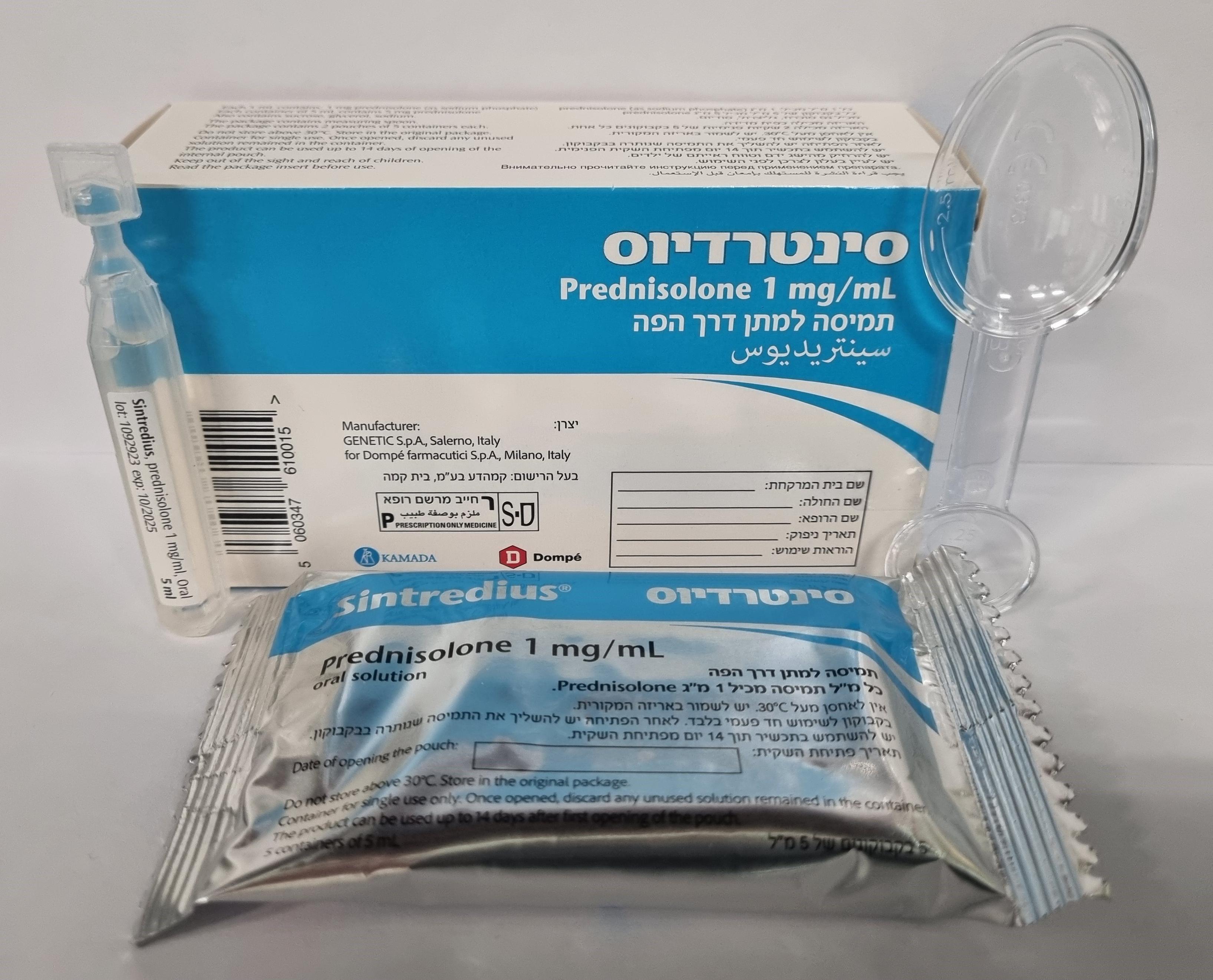Quest for the right Drug

סינטרדיוס SINTREDIUS (PREDNISOLONE AS SODIUM PHOSPHATE, PREDNISOLONE SODIUM PHOSPHATE)
תרופה במרשם
תרופה בסל
נרקוטיקה
ציטוטוקסיקה
צורת מתן:
פומי : ORAL
צורת מינון:
תמיסה : SOLUTION
עלון לרופא
מינוניםPosology התוויות
Indications תופעות לוואי
Adverse reactions התוויות נגד
Contraindications אינטראקציות
Interactions מינון יתר
Overdose הריון/הנקה
Pregnancy & Lactation אוכלוסיות מיוחדות
Special populations תכונות פרמקולוגיות
Pharmacological properties מידע רוקחי
Pharmaceutical particulars אזהרת שימוש
Special Warning עלון לרופא
Physicians Leaflet
Interactions : אינטראקציות
4.5 Interaction with other medicinal products and other forms of interaction Rifampicin, rifabutin, carbamazepine, phenobarbitone, phenytoin, primidone, ephedrine and aminoglutethimide enhance the metabolism of corticosteroids and its therapeutic effects may be reduced. Therefore it may be necessary to adjust the dose accordingly. Mifepristone may reduce the effect of corticosteroids for 3-4 days. Erythromycin and ketoconazole may inhibit the metabolism of some corticosteroids. Ciclosporin increases plasma concentration of prednisolone. The same effect is possible with ritonavir. Oestrogens and other oral contraceptives may potentiate the effects of glucocorticoids and dosage adjustments may be required if oral contraceptives are added to or withdrawn from a stable dosage regimen. The desired effects of hypoglycaemic agents (including insulin), anti-hypertensives and diuretics are antagonized by corticosteroids. The growth promoting effect of somatotropin may be inhibited by the concomitant use of corticosteroids. Steroids may reduce the effects of anticholinesterases in myasthenia gravis and cholecystographic x-ray media. The efficacy of coumarin anticoagulants and warfarin may be enhanced by concurrent corticosteroid therapy and close monitoring of the INR or prothrombin time is required to avoid spontaneous bleeding. Concomitant use of aspirin and Non Steroidal Anti-Inflammatory Drugs (NSAIDs) with corticosteroids increases the risk of gastro-intestinal bleeding and ulceration. The renal clearance of salicylates is increased by corticosteroids and steroid withdrawal may result in salicylate intoxication. The hypokalaemic effects of acetazolamide, loop diuretics, thiazide diuretics, and carbenoxolone, are enhanced by corticosteroids. The risk of hypokalaemia is increased with theophylline and amphotericin. Corticosteroids should not be given concomitantly with amphotericin, unless required to control reactions. The risk of hypokalaemia also increases if high doses of corticosteroids are given with high doses of bambuterol, fenoterol, formoterol, ritodrine, salbutamol, salmeterol and terbutaline. The toxicity of cardiac glycosides is increased if hypokalaemia occurs with corticosteroids. Concomitant use with methotrexate may increase the risk of haematological toxicity. High doses of corticosteroids impair the immune response and so live vaccines should be avoided (see also warnings). In rare cases the concomitant treatment with corticosteroids and fluoroquinolones may increase the risk of tendon rupture. Co-treatment with CYP3A inhibitors, including cobicistat-containing products, is expected to increase the risk of systemic side-effects. The combination should be avoided unless the benefit outweighs the increased risk of systemic corticosteroid side-effects, in which case patients should be monitored for systemic corticosteroid side-effects.

שימוש לפי פנקס קופ''ח כללית 1994
לא צוין
תאריך הכללה מקורי בסל
לא צוין
הגבלות
לא צוין
מידע נוסף
